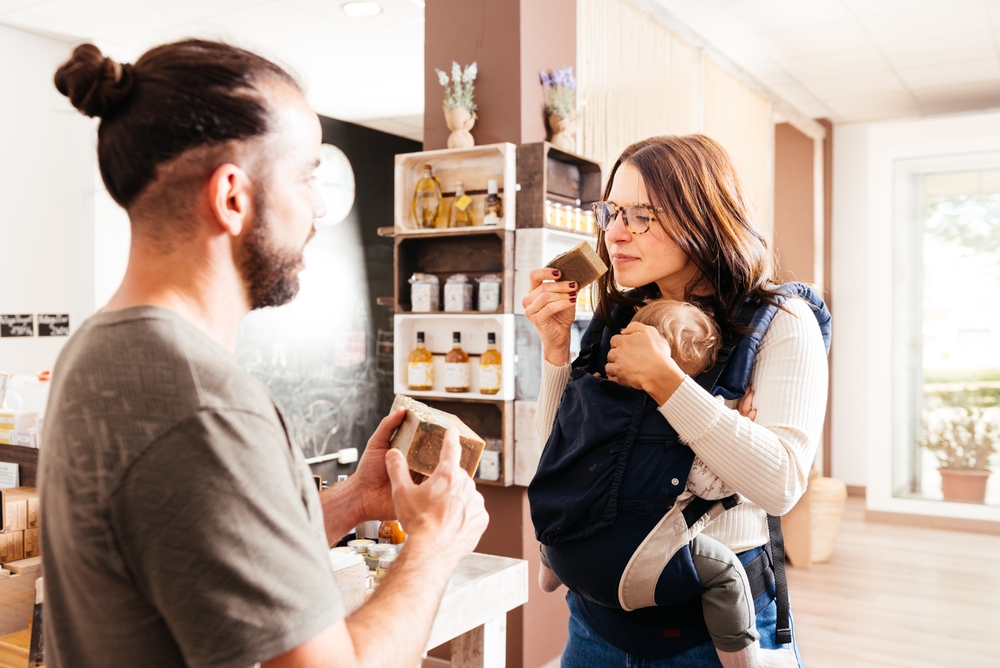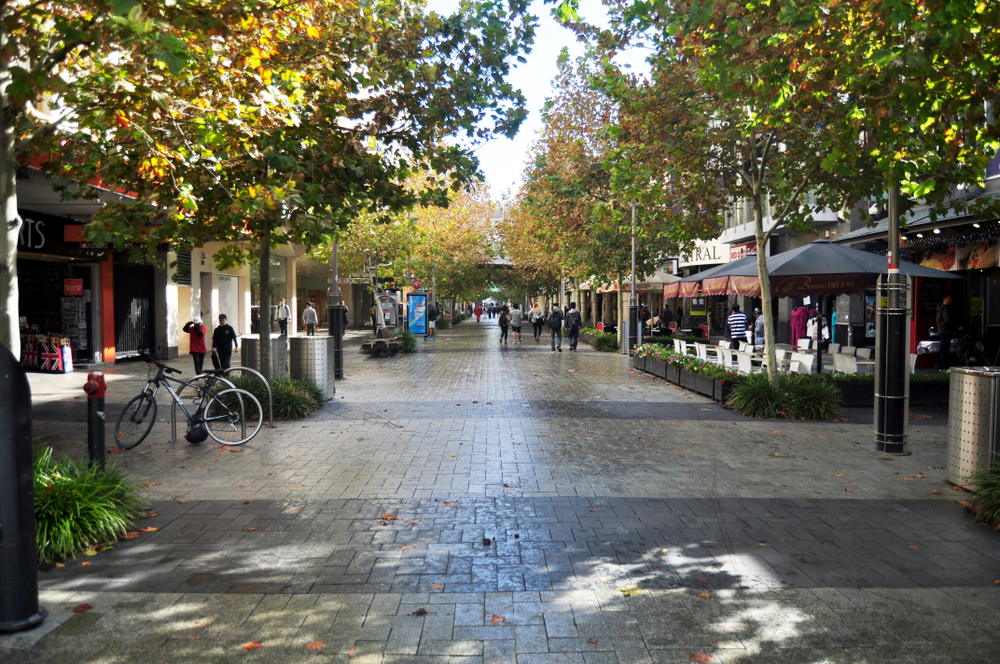
Quick Answer: What Are Micro-Identities and Why Do They Matter for Brand Strategy?
Micro-identities represent the practice of developing multiple, distinct brand personalities tailored to specific niche communities rather than presenting a single unified brand voice to all audiences. This strategy recognises that modern consumers identify with multiple overlapping communities—from fitness enthusiasts who thrift vintage clothing to personal finance nerds who love sustainable living. Research shows that 82% of consumers feel belonging to at least one online community, with many participating in several simultaneously. Micro-identity branding involves creating customised messaging, visual elements, content styles, and engagement approaches for each community whilst maintaining core brand values. This isn't inconsistency—it's cultural fluency. For Australian businesses, micro-identities enable authentic connections with audiences who increasingly reject generic marketing. The approach leverages platform-specific algorithms, particularly TikTok's content-first discovery system that connects people based on shared values rather than demographics, and community platforms like Discord where average server sizes of 5-20 users create intimate spaces demanding genuine participation. Brands implementing micro-identity strategies report engagement rates up to 2.26% on niche content compared to 0.85% for broad-appeal posts, with micro-influencer partnerships yielding 60% more trust than celebrity endorsements and $6.50 return on every dollar invested.
Key Takeaways: Building Micro-Identities for Australian Niche Communities

Understanding Micro-Communities in 2025: Micro-communities are small, highly engaged groups centred around specific interests, identities, or values. They thrive on Discord (average 5-20 members per server), Substack (paywalled personal spaces), Reddit forums, TikTok hashtag communities, and industry-specific platforms. Unlike mass social media's one-to-many broadcasting, micro-communities enable one-to-few interactions creating stronger relationships and higher trust levels. These spaces have their own language, memes, traditions, and cultural codes that brands must learn before participating. Niche communities and creators are the marketing power moves delivering authenticity and cultural relevance audiences crave in 2025.
Micro-Identity Framework for Brands: Successful micro-identity strategies involve five core components: (1) Community mapping—identifying which niche groups align with your products/values; (2) Cultural research—understanding each community's language, values, behaviours, and communication styles; (3) Tailored content creation—developing community-specific messaging that demonstrates fluency in their culture; (4) Micro-influencer partnerships—collaborating with trusted community voices rather than broad-reach celebrities; (5) Platform-native execution—adapting content formats and engagement styles to where each community gathers (Discord voice chats vs Reddit text discussions vs TikTok videos).
Platform-Specific Strategies:TikTok: Content-first algorithm prioritises engagement over follower counts, meaning niche content can go viral regardless of account size. Use specific hashtags, create videos in community-native styles, participate in micro-trends. Fashion content averages 2.26% engagement, far exceeding broad-appeal posts.Discord: Intimate servers demand consistent presence, genuine value-add, and community moderation. Brands that "launch big then abandon" fail immediately. Success requires treating Discord like hosting virtual living rooms.Reddit: Deep, authentic discussions in subreddits demand expertise and transparency. Personal finance communities like r/AusFinance expect substance over sales pitches.Substack: Paywalled, ad-free spaces where thought leadership and shared ethos matter more than traditional marketing. Brands hire embedded writers creating authentic content mimicking native creators.
Australian Market Opportunities: With 85% of adults owning smartphones and consumers spending 1 hour 51 minutes daily on social platforms, Australian audiences are deeply engaged in micro-communities. From personal finance groups focused on FIRE (Financial Independence, Retire Early) strategies in Australian context, to sustainable fashion communities sharing thrift finds from Melbourne op-shops, to gaming Discord servers organised around Oceanic time zones—niche communities with distinctly Australian flavours offer untapped opportunities for businesses willing to develop authentic micro-identities rather than importing generic global campaigns.
The Death of Mass Marketing: Why One-Size-Fits-All Branding No Longer Works
Traditional marketing operated on simple mathematics: reach the maximum number of people with a single message, hoping sufficient percentage converts to justify investment. Brands developed unified identities expressed consistently across all channels to all audiences. This approach worked when media was scarce, attention was abundant, and consumer choice was limited.
That world no longer exists. In 2025, Australian consumers encounter over 10,000 marketing messages daily across digital channels. They've developed sophisticated filtering mechanisms, ad-blocking technologies, and banner blindness that renders most broad-reach marketing invisible. More fundamentally, they've organised themselves into thousands of niche communities where they seek genuine connection, shared values, and authentic engagement—not sales pitches.
The rise of micro-communities represents a fundamental shift in how consumers interact online. Rather than passively consuming content broadcasted by brands and media companies, they're actively participating in communities centred around specific interests. These aren't casual Facebook groups with thousands of inactive members—they're intimate spaces where 5-20 people gather regularly to discuss vintage Japanese denim, compare notes on dividend investing strategies, share meal prep ideas for plant-based athletes, or troubleshoot mechanical keyboard builds.
The implications for digital marketing are profound. Brands can no longer expect single campaigns to resonate universally. A message crafted for mainstream appeal fails to connect deeply with anyone because it lacks the specificity, cultural references, and insider knowledge that signal authentic community membership. Meanwhile, brands developing micro-identities—distinct personalities tailored to specific communities—forge powerful connections with audiences who feel genuinely understood rather than generically marketed to.

Understanding Micro-Identities: Beyond Audience Segmentation
Micro-identities differ fundamentally from traditional audience segmentation. Segmentation divides markets based on demographics, psychographics, or behaviours, then targets each segment with slightly adjusted versions of core messaging. Micro-identity branding goes deeper, developing distinct brand expressions that feel native to each community whilst maintaining authentic alignment with core values.
Consider a hypothetical Australian activewear brand. Traditional segmentation might divide audiences into "fitness enthusiasts," "casual exercisers," and "athleisure consumers," creating three variations of product marketing emphasising performance, comfort, or style respectively. Micro-identity branding recognises that within "fitness enthusiasts" exist dozens of distinct communities: CrossFit athletes who value functional durability, yoga practitioners prioritising sustainability and flexibility, runners focused on technical performance, gym-goers attracted to aesthetic brands, outdoor adventurers requiring versatility, and home workout enthusiasts seeking multipurpose gear.
Each community has its own language. CrossFit athletes discuss "WODs" (workouts of the day), "AMRAPs" (as many rounds as possible), and "box" culture. Yoga practitioners reference "asanas," "pranayama," and studio communities. These aren't just vocabulary differences—they represent distinct value systems, aesthetics, and cultural codes. A brand developing micro-identities creates separate content streams, visual styles, and engagement approaches for each community, demonstrating fluency in their specific culture rather than speaking generic "fitness language."
This requires more than surface-level customisation. It demands genuine understanding of what matters to each community, who they trust, how they communicate, and what they value beyond the products brands sell. It means participating authentically in community spaces, building relationships over time, and earning the right to be heard rather than buying attention through broad-reach advertising.
The Platform Revolution: How TikTok, Discord, and Substack Enable Micro-Identities
Three platforms exemplify the shift toward micro-communities and the opportunities for micro-identity branding: TikTok's content-first algorithm, Discord's intimate server model, and Substack's creator-first publishing.
TikTok: Where Niche Content Finds Mass Audiences

TikTok's algorithm fundamentally differs from Instagram or Facebook by prioritising engaging content over creator social capital. Follower counts matter less than whether individual videos resonate with specific audiences. This creates unprecedented opportunities for niche content to achieve viral reach. A video about vintage fountain pen restoration, Australian native plant gardening, or mechanical keyboard customisation can accumulate millions of views despite the creator having minimal following because TikTok's algorithm identifies and serves it to people with those specific interests.
For brands, this means niche content creation becomes viable strategy rather than limiting oneself to broad appeal. Fashion content achieves 2.26% engagement rates when targeted at specific style communities—vintage fashion, sustainable fashion, streetwear, haute couture—compared to 0.85% for generic fashion content. The algorithm connects content to people based on shared values, humour, or trends, making micro-identity branding powerful for reaching hyper-targeted audiences at scale.
Successful brands on TikTok develop multiple content streams tailored to different communities rather than posting identical content hoping it resonates broadly. They understand that "let him cook," "delulu," and other community-specific phrases signal cultural fluency, participate authentically in micro-trends before they hit mainstream, and collaborate with micro-influencers who are already trusted voices within specific niches.
Discord: The Virtual Living Rooms Demanding Authenticity
Discord represents the opposite extreme from TikTok's algorithm-driven reach. With average server sizes of 5-20 members, Discord communities are intimate spaces where brands cannot hide behind polished marketing. Discord users are allergic to overt marketing, and servers that "launch big then abandon" fail immediately. Success requires consistent presence, genuine value contribution, and community moderation treating spaces like hosting in your home.
Australian gaming communities, crypto enthusiast servers, tech hobbyist groups, and professional networking communities all thrive on Discord because it enables real-time voice communication, persistent text channels, and community-building features that create genuine belonging. Brands approaching Discord must embrace micro-identity thinking: you're not broadcasting to customers—you're participating as community members who happen to offer products or services that serve community needs.
This demands resource investment beyond traditional social media marketing. Discord communities expect regular engagement, thoughtful responses to questions, organisation of community events, and recognition that members' time and trust are precious. However, brands successfully building Discord micro-communities unlock unprecedented loyalty. These aren't passive followers—they're active advocates who defend brands, provide feedback, create user-generated content, and drive word-of-mouth growth.
Substack: Paywalled Spaces for Thought Leadership
Substack's creator-first publishing platform enables brands and individuals to build direct relationships with audiences through email newsletters, podcasts, and community features. Unlike social platforms where algorithms control visibility, Substack creators own their audience relationships. The platform remains ad-free by design, with monetisation through subscriptions rather than advertising.
For brands, Substack represents opportunity to develop thought leadership micro-identities within professional communities. Personal finance brands hiring embedded writers who create Australian-focused content about FIRE strategies, investment approaches, or financial independence. Food brands building communities around specific dietary approaches—vegan athletes, keto practitioners, Mediterranean diet enthusiasts. Technology companies establishing themselves as authorities within developer communities, cybersecurity professionals, or emerging tech adopters.
Success on Substack requires treating publication with the same rigour as product development. The key is integration over interruption—shared ethos and genuine value rather than thinly veiled sales content. Brands like The RealReal hire writers creating authentic content that mimics Substack-native creators, demonstrating cultural fluency within communities they're serving rather than obvious corporate messaging.
Micro-Influencers: The Trust Engines of Niche Communities
Micro-influencers—individuals with 1,000 to 100,000 followers focused on specific niches—have become essential partners for micro-identity branding. They possess something mega-influencers and celebrities cannot replicate: authentic trust within specific communities. Research indicates 60% of people trust influencers more than traditional celebrities, with micro-influencers generating even higher trust due to perceived authenticity and genuine passion for topics they discuss.
Why Micro-Influencers Outperform Celebrity Partnerships
The economics and effectiveness of micro-influencer partnerships favour brands on multiple dimensions. Micro-influencers typically charge $100-$1,000 per sponsored post compared to $10,000-$1,000,000+ for macro-influencers and celebrities, making them accessible to Australian SMEs and startups. More importantly, they deliver superior ROI—approximately $6.50 return for every dollar invested according to Tomoson research, with higher returns specifically from micro-influencer partnerships due to their targeted audiences.
Engagement rates tell the story. Where mega-influencers might achieve 1-2% engagement on sponsored content, micro-influencers regularly exceed 5-10% because their followers genuinely care about their opinions and recommendations. Dr. Regina Moore, co-founder of Women's Personal Finance, explains the dynamic: "Those of us who are focusing on quality over quantity are going to take the types of partnerships we engage in very seriously." Micro-influencers view themselves as stewards of their communities, protecting followers from inappropriate partnerships and only collaborating with brands authentically aligned with community values.
Finding and Partnering with Micro-Influencers
Identifying relevant micro-influencers requires research beyond follower counts. Look for creators demonstrating genuine expertise in your niche, consistent engagement with their audience, values aligned with your brand, and content quality matching your standards. Australian businesses should prioritise local micro-influencers who understand cultural context, reference local experiences, and connect with audiences on familiar terms.
Successful partnerships provide creative freedom rather than dictating exact messaging. Micro-influencers know their audiences better than brands do—they understand which content formats resonate, what tone works, and how to integrate brand mentions authentically. Treating them as collaborative partners rather than advertising vehicles yields better results. Build genuine relationships based on mutual respect and shared values, not transactional sponsorship arrangements.

Building Micro-Identities: Strategic Framework for Australian Businesses
Developing effective micro-identity branding requires systematic approach balancing authenticity, consistency, and scalability. The following framework guides Australian businesses through the process.
Step 1: Map Your Niche Communities
Begin by identifying which micro-communities align with your products, services, or brand values. This involves more than demographic research—it requires understanding passion points, shared interests, and tribal identities. For food brands, communities might centre around dietary approaches (vegan, keto, paleo), cooking methods (air frying, slow cooking, fermentation), or food philosophies (zero waste, farm-to-table, meal prepping). For technology brands, communities might organise around specific programming languages, development frameworks, hardware preferences, or use cases.
Australian context matters significantly. Communities discussing personal finance focus heavily on superannuation, negative gearing, franking credits, and other locally specific topics. Fashion communities reference Australian retailers, climate considerations, and cultural attitudes toward sustainability. Fitness communities organise around Oceanic time zones, Australian summer/winter seasonality, and local outdoor spaces. Generic international approaches miss these nuances, failing to demonstrate authentic understanding of Australian community experiences.
Use social listening tools to identify where conversations happen, who the trusted voices are, what topics generate engagement, and what language communities use. Join communities as observer first, learning cultural codes before attempting participation. Reddit offers window into Australian micro-communities through subreddits like r/AusFinance, r/AustralianMFA (male fashion advice), r/FitnessAustralia, and hundreds of others. TikTok hashtags reveal thriving communities around niche interests. Discord server discovery tools identify active communities in your industry.
Step 2: Develop Cultural Fluency
Understanding niche communities requires more than surface observation—it demands genuine cultural immersion. Each community has inside jokes, shared reference points, communication norms, and value hierarchies that signal membership. Attempting to engage without this fluency marks brands as outsiders attempting exploitation rather than authentic participants.
Dedicate time to learning community language. Personal finance communities discuss "FIRE" (Financial Independence, Retire Early), "DCA" (dollar-cost averaging), "NW" (net worth), and "FI" (financial independence). Gaming communities reference specific mechanics, meta strategies, patch notes, and developer communications. Fashion communities distinguish between "thrifting," "vintage," and "secondhand" with precise definitional boundaries. Using incorrect terminology or misunderstanding context signals lack of genuine community understanding.
Beyond vocabulary, understand value systems. What does this community care about beyond the obvious? Sustainable fashion communities prioritise environmental impact, labour conditions, longevity, and circular economy principles—not just aesthetic preferences. Gaming communities value skill development, fair competition, developer responsiveness, and community toxicity management. Personal finance communities emphasise financial independence, lifestyle design, risk management, and long-term thinking. Your micro-identity for each community must authentically reflect these values, not superficially reference them for marketing purposes.
Step 3: Create Community-Specific Content
With cultural understanding established, develop content tailored to each community's preferences, platforms, and engagement styles. This isn't slight variations of core messaging—it's fundamentally different content recognising that community A and community B have different interests, consume media differently, and respond to distinct approaches.
For visual content, adapt aesthetics to community norms. Sustainable fashion communities appreciate earthy tones, natural lighting, and behind-the-scenes manufacturing content. Streetwear communities expect bold graphics, urban settings, and hype culture references. Activewear fitness communities want action shots demonstrating product performance. Each requires distinct visual language signalling authentic community membership.
Content formats vary by platform and community. TikTok demands short-form video with quick hooks, trending audio, and platform-native effects. Reddit expects thoughtful text posts contributing genuine value to discussions, with promotional content downvoted aggressively. Discord requires consistent presence in voice channels, thoughtful text responses, and community event organisation. Substack demands long-form thought leadership demonstrating expertise and insights subscribers can't find elsewhere.
Crucially, involve community members in content creation. User-generated content, customer testimonials from community insiders, and collaborations with micro-influencers all signal authenticity more effectively than brand-created content alone. Encourage community members to share their stories, showcase their uses of your products, and participate in challenges or campaigns demonstrating real-world application within community contexts.
Step 4: Engage Authentically and Consistently
Micro-identity branding succeeds or fails based on sustained authentic engagement. One-off campaigns targeting niche communities generate suspicion rather than loyalty. Communities have long memories for brands attempting exploitation, abandoning communities after brief appearances, or demonstrating superficial understanding of community values.
Successful engagement requires regular participation in community spaces. Respond to comments thoughtfully, answer questions genuinely, participate in discussions even when they don't directly relate to your products, and contribute value beyond marketing objectives. On Discord, this means hosting community events, moderating discussions, and being present in voice channels. On Reddit, it means answering questions, sharing expertise, and accepting downvotes when community disagrees with perspectives. On TikTok, it means commenting on relevant videos, duetting community content, and participating in trends authentically.
Avoid common engagement mistakes that alienate communities. Don't spam promotional content without value contribution. Don't ignore negative feedback or delete critical comments. Don't claim expertise you don't possess or make promises you can't keep. Don't appropriate community language without understanding context. Don't pivot suddenly when engagement doesn't immediately drive sales—community building requires patience.
Step 5: Measure Micro-Identity Performance
Traditional marketing metrics often fail to capture micro-identity success. Reach and impressions matter less than engagement depth, community sentiment, and long-term loyalty. Develop measurement frameworks recognising that micro-communities deliver value through quality over quantity.
Track engagement rates within specific communities rather than aggregate metrics across all audiences. A niche community generating 5% engagement with 1,000 members provides more value than broad audience generating 0.5% engagement with 100,000 members. Monitor sentiment through qualitative analysis of comments, discussions, and community feedback. Are community members defending your brand unprompted? Recommending products to others? Creating user-generated content? These signals indicate successful micro-identity development.
Measure conversion rates specifically from community-driven traffic. Use UTM parameters, affiliate codes, or community-specific discount codes to track which micro-communities drive actual sales. Calculate customer lifetime value from community-acquired customers—micro-community members often demonstrate higher retention and repeat purchase rates due to stronger emotional connections.
Long-term metrics matter more than short-term spikes. Community-building is marathon, not sprint. Brands successfully developing micro-identities see compounding returns as community advocates drive organic growth, but this requires sustained commitment over months and years rather than weeks.
Industry-Specific Micro-Identity Strategies
Different industries face unique opportunities and challenges implementing micro-identity branding. The following examples illustrate sector-specific approaches.
Fashion and Retail
Fashion naturally segments into micro-communities: vintage enthusiasts, sustainable fashion advocates, streetwear heads, minimalist wardrobe practitioners, plus-size fashion communities, and countless others. Each has distinct values, aesthetic preferences, and shopping behaviours. Successful fashion brands develop separate Instagram accounts, TikTok content streams, or even sub-brands targeting specific communities rather than attempting universal appeal.
Poshmark demonstrates platform-level micro-identity enablement. The resale marketplace incorporates social features letting fashion communities share videos of listed items, follow each other, and comment on offerings. This creates infrastructure for micro-communities to flourish around specific fashion aesthetics, with brands and sellers developing distinct identities within each.
Australian fashion retailers should leverage local micro-communities around surf culture, festival fashion, workwear minimalism, and sustainable fashion movements particularly strong in Melbourne and Sydney. Partner with local micro-influencers who embody these aesthetics authentically, create content showcasing how products fit within community lifestyles, and participate in local events bringing communities together physically.
Financial Services
Personal finance represents fertile ground for micro-identity branding given the diversity of financial philosophies and goals. FIRE communities focus on extreme saving and early retirement. Passive income communities prioritise dividend investing and real estate. Cryptocurrency communities embrace speculation and emerging technology. Traditional wealth-building communities value index funds and long-term thinking.
Dr. Regina Moore's Women's Personal Finance community exemplifies niche focus. Rather than addressing "everyone interested in finance," it specifically serves women and nonbinary individuals, creating safe space for discussions about financial topics often dominated by male voices. This specificity enables deeper connections and more relevant content than generic personal finance advice.
Australian financial services brands should develop micro-identities addressing locally specific topics: superannuation optimisation strategies, negative gearing considerations, Australian tax implications, First Home Super Saver Scheme navigation, and franking credit maximisation. Partner with Australian financial micro-influencers who discuss these topics authentically, avoiding generic international investment advice that doesn't translate to Australian regulatory and tax environments.

Food and Hospitality
Food communities organise around dietary approaches (vegan, vegetarian, keto, paleo, Mediterranean), ethical considerations (organic, local, fair trade), skill levels (home cooks, meal preppers, fermentation enthusiasts, bakers), and cultural cuisines. Each represents opportunity for micro-identity development.
DELLI, cofounded by Depop's founder, demonstrates community-led platform thinking. The app uses drop model helping reduce food waste whilst enabling smaller producers to market directly to food lovers. This creates infrastructure for micro-communities around specific food philosophies, with brands and producers developing identities aligned with community values.
Australian food brands should leverage the country's strong sustainable food movement, multicultural cuisine communities, and emerging food waste reduction initiatives. Develop micro-identities addressing zero-waste cooking, native Australian ingredients, Asian-Australian fusion cuisines, and plant-based Australian barbecue culture. Partner with food micro-influencers creating content within these specific niches rather than generic food bloggers with broad appeal.
Technology and Software
Technology communities segment by programming languages, frameworks, use cases, and philosophical approaches. Developers passionate about Rust, Python, JavaScript, or Go represent distinct communities with different values and communication styles. Similarly, communities organised around specific frameworks (React, Vue, Angular), deployment platforms (AWS, Azure, Google Cloud), or development methodologies (Agile, DevOps, continuous integration) each have distinct cultures.
Software brands developing micro-identities should create separate content streams, documentation styles, and community engagement approaches for each developer community rather than generic "developer marketing." Host community-specific events, sponsor relevant conferences, contribute to open-source projects communities value, and hire developer advocates who are already trusted voices within specific niches.
Australian technology companies benefit from thriving local developer communities in Sydney, Melbourne, and Brisbane, alongside remote-first communities organised around Oceanic time zones. Develop micro-identities acknowledging Australian tech culture's distinct characteristics: strong open-source participation, emerging startup ecosystem, specific challenges around data sovereignty and internet infrastructure, and growing focus on ethical technology development.
Common Mistakes: How Micro-Identity Strategies Fail
Understanding failure modes helps avoid common pitfalls undermining micro-identity branding efforts.
Superficial Customisation Without Cultural Understanding
The most common mistake involves slight variations of core messaging without genuine cultural fluency. Brands add niche-specific hashtags, reference community vocabulary without understanding context, or create "community-targeted content" that reveals lack of authentic understanding. Communities immediately detect superficiality, rejecting brands attempting exploitation rather than authentic participation.
Solution: Invest time genuinely immersing in communities before attempting marketing. Read extensively, observe discussions, identify cultural norms, and engage as learner before positioning as expert. Hire community insiders or partner with micro-influencers who provide cultural guidance rather than relying solely on internal teams lacking community experience.
Inconsistent Engagement and Community Abandonment
Brands launch enthusiastically into niche communities, creating initial content bursts, then disappearing when immediate sales don't materialise. This abandonment damages brand reputation more than never participating. Communities remember brands that treated them as short-term marketing targets rather than valued audiences worthy of sustained engagement.
Solution: Commit to long-term community presence before launching micro-identity initiatives. Allocate ongoing resources for community management, content creation, and authentic participation. Set realistic expectations that community building delivers compounding returns over time rather than immediate ROI. Measure success through engagement, sentiment, and loyalty rather than short-term conversion spikes.
Compromising Brand Values for Community Acceptance
Desperation for community acceptance sometimes leads brands to compromise core values or make claims inconsistent with actual practices. This creates worse outcome than maintaining authentic brand identity even when it doesn't perfectly align with every community. Discovered inauthenticity destroys trust comprehensively, whilst honest acknowledgment of value differences while focusing on shared ground maintains respect.
Solution: Identify communities genuinely aligned with brand values rather than attempting to be everything to everyone. Develop micro-identities that authentically reflect both community culture and brand essence. When tensions exist between brand practices and community values, acknowledge transparently whilst demonstrating genuine commitment to improvement rather than greenwashing or empty promises.
Scaling Too Quickly Without Foundation
Brands excited by micro-identity potential sometimes attempt targeting dozens of communities simultaneously, spreading resources too thin to execute any single community strategy effectively. This results in mediocre presence everywhere rather than excellent presence somewhere, failing to achieve depth required for authentic community relationships.
Solution: Start with 2-3 niche communities where brand alignment is strongest and commit to excellence before expanding. Master micro-identity development in initial communities, document what works, develop scalable systems and processes, then gradually add new communities. Quality trumps quantity—deeper connections with fewer communities deliver better results than superficial presence across many.
The Future: Where Micro-Identities Are Heading
Several trends will shape micro-identity branding evolution over coming years.
Web3 and Headless Brands
Decentralised, community-owned brands built on blockchain technology represent emerging model where communities themselves drive brand development. Members own governance tokens enabling voting on brand decisions, product development, and resource allocation. These "headless brands" exist without traditional corporate structures, with products and services built for and by community members.
Australian businesses should monitor this space even if not immediately adopting Web3 technologies. The principles underlying headless brands—community ownership, participatory governance, and member benefit prioritisation—inform traditional business approaches to community engagement and micro-identity development.

AI-Powered Personalisation at Scale
Artificial intelligence increasingly enables hyper-personalisation previously impossible at scale. Brands leverage data and technology to personalise brand experiences for individual consumers, with AI facilitating dynamic content adaptation based on community membership, engagement history, and individual preferences whilst maintaining human-crafted strategy and creative direction.
Future micro-identity platforms might automatically adjust messaging, visual elements, and content formats based on which community member belongs to, enabling brands to maintain dozens or hundreds of micro-identities without proportionally scaling human resources. However, authentic community engagement will remain fundamentally human endeavour—AI assists but cannot replace genuine cultural understanding and relationship building.
Platform Consolidation and Fragmentation
The landscape of platforms hosting micro-communities continues evolving. New platforms emerge catering to specific niches whilst established platforms add features facilitating micro-community formation. TikTok, Instagram, YouTube, and other major platforms increasingly prioritise algorithm-driven content discovery connecting people based on interests rather than social graphs, enabling niche content to find audiences more effectively.
Australian businesses should maintain flexibility, following audiences to wherever they gather rather than insisting communities form on platforms brands prefer. This requires monitoring emerging platforms, experimenting with new formats, and accepting that different communities prefer different platforms based on functionality, culture, and network effects.
Taking Action: Your Micro-Identity Roadmap
Australian businesses ready to embrace micro-identity branding should begin with focused experimentation rather than comprehensive transformation. Start small, learn quickly, and scale what works.
Identify one or two niche communities genuinely aligned with your brand where you can commit sustained attention. Conduct deep cultural research understanding community values, language, behaviours, and trusted voices. Engage authentically without immediate marketing agenda, contributing value and building relationships. Partner with micro-influencers who are already community members rather than attempting to build credibility from scratch.
Create community-specific content demonstrating cultural fluency and authentic understanding. Participate consistently over months, measuring engagement depth, sentiment, and community advocacy. Document what works, refine approaches based on feedback, and gradually expand to additional communities once initial experiments succeed.
Remember that micro-identity branding represents fundamental shift from interruption-based marketing to participation-based community building. Success requires patience, authenticity, and genuine commitment to serving community needs rather than merely extracting value. Brands willing to make this shift unlock unprecedented loyalty, advocacy, and long-term value in era where trust is currency and authenticity is competitive advantage.
Ready to Build Authentic Micro-Identities That Drive Real Results?
Navigating Australia's fragmented digital landscape and building genuine connections with niche communities requires expertise, cultural fluency, and strategic execution. Maven Marketing Co specialises in developing micro-identity branding strategies that help Australian businesses connect authentically with their most valuable audiences.
Our team understands the nuances of community-first marketing, micro-influencer partnerships, and platform-specific engagement strategies. We'll help you identify which niche communities align with your brand, develop cultural fluency within those spaces, create community-specific content that resonates, and build sustainable relationships driving long-term loyalty.
Don't waste resources on generic marketing that fails to connect. Don't risk damaging brand reputation through clumsy community engagement. Don't miss opportunities to build powerful advocacy within communities that could become your most valuable customers.
Visit mavenmarketingco.com.au today to schedule your micro-identity strategy consultation. Let's identify your niche communities, develop authentic brand expressions, and build relationships that transform casual customers into passionate advocates.
The future of marketing is personal, authentic, and community-driven. Let's build it together—one micro-identity at a time.









